DS-Alert System: Pathway Risks
DS-Alert System: Pathway Risks
Description
Analyses of historical pathway risks for tephritids (fruit flies) into Europe.
Background
To assess the changing risk of FF importation to Europe, we examined the historical FF interception patterns in selected European countries, studying the seasonality of transport and interannual trends in commodity flows, and linking transport data to climatic suitability at the source. This method integrates historical, temporal, and environmental factors, providing a framework for understanding and addressing the evolving risk of FF importation to Europe.
In the FF-IPM project we have analysed the data and summarised the risks as a series of graphics below.
Methods
We reviewed the candidate sources to source trade data for risk calculations in the DS-Alert system. Data sources related to trade patterns between the EU and the rest of the world have been identified, including TradeMap provided by International Trade Center (www.trademap.org), Comtrade (https://comtrade.un.org/data/) and Eurostat Comext. All datasets include information on monthly import and export quantities of the commodities, including those associated with three FFs. We ultimately used Eurostat Comext as the main source of trade data because of missing data in the COMTRADE database: Eurostat Comext is more frequently updated and appears to have the fewest gaps. We also benefit from the bulk upload via API to the DSS tool.
To identify the commodities of interest, we collated data from EPPO and CABI related to the plant hosts associated with each FF and created a database with Latin and common plant names. Those names were further searched in trade export data to identify commodity flows that could potentially contain cargo infested with FF. We quantified the number of interceptions per tonne of commodities imported based on country of origin and world region, and we investigated the main modes of transport via which the commodities are transported. Monthly trade data were transformed using splines into weekly information in order to align with the temporal resolution of climate suitabilities for individual FF at the countries of origin and the DSS system outputs.
Data for FF interceptions were sourced from the SANTE-Traces database, previously compiled by EUROPHYT. Trade data were obtained from TradeMap, UN Comtrade, and Eurostat (COMEXT), and comparative analyses were performed based on factors such as comprehensiveness, information detail, and accessibility to choose the best dataset for analysis.
Results and Discussion
Thirty-nine commodity codes, as defined by the World Trade Organization were identified as “at risk” due to their inclusion of fruits or vegetables listed as hosts to the three fruit flies. Analysis of trade and interception data in Europe for commodities representing fruit fly hosts provided a picture of geographic and seasonal variations in trends and fruit fly interceptions. The majority of interceptions are reported from air transport (Figure 1).
South Asia has the highest number of interceptions per 10 000 tonnes of imported commodities (2013-2022), followed by East Asia and the Pacific, and then by sub-Saharan Africa (Figure 2). Reviewing the historical trends of interceptions and trade, both follow similar trends with the majority of imports and the majority of interceptions happening in the summer months of the year (Figure 3). It is important to note, however, that these trends may vary not only by individual commodity but also by the member state receiving the imports, as shown in Figures 4 and 5.
EUROPHYT/Traces data for 2005-2020 illustrates the origin countries from which interceptions of organisms are classified as Tephritidae and Bactrocera. Pie charts in Figure 6 represent the type of commodity associated with interception records, and polygon shading indicates the number of interceptions from that origin country. Further illustrations of the historical and geographical trends of commodity imports (Figure 7) highlight that border inspection services should carefully tailor their activities based on their individual trends.
These analyses highlight that seasonal variation in the amount of goods needs to be accounted for when planning biosecurity surveillance activities. A set of online tools are provided to assist border biosecurity, indicating the likely potential for populations of different FF species to grow if introduced at different times of the year.
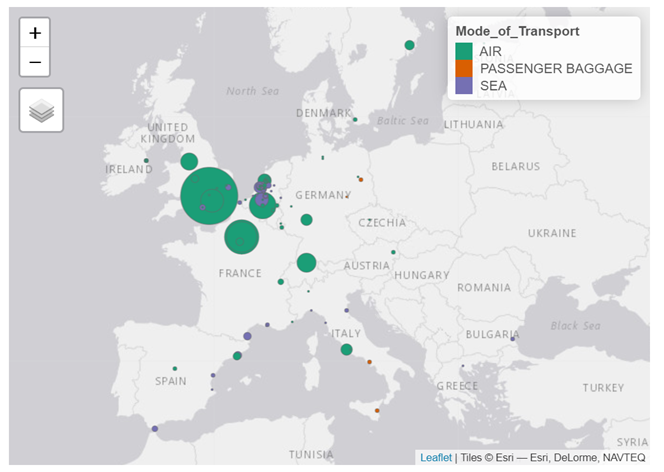
Figure 1. Fruit fly interceptions in Europe by mode of transportation and destination country
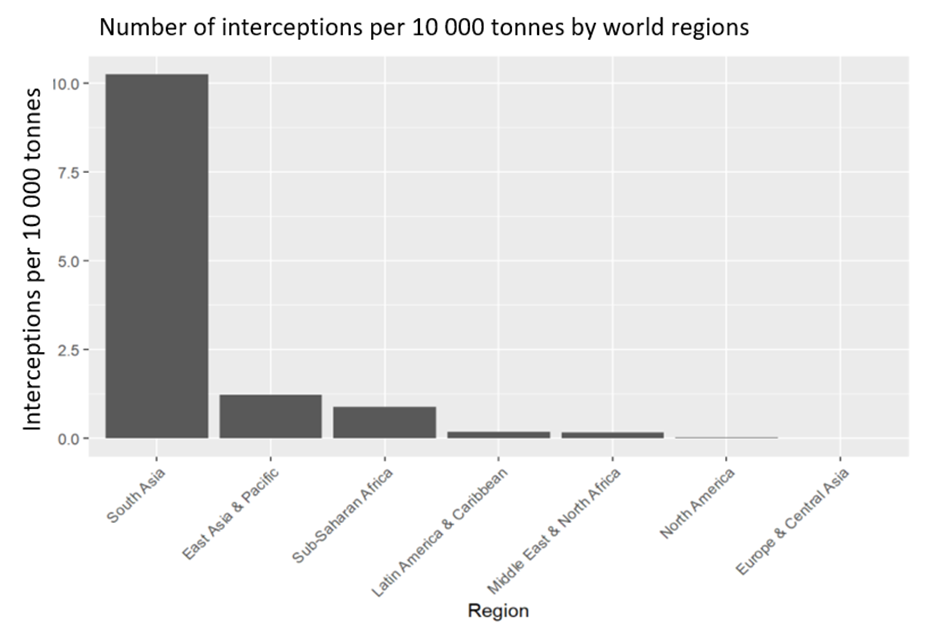
Figure 2. Number of interceptions per 10 000 tonnes of imported commodities associated with three fruit fly species. South Asia includes India, Pakistan, Nepal, Bangladesh, Bhutan and Sri Lanka (source Europhyt).
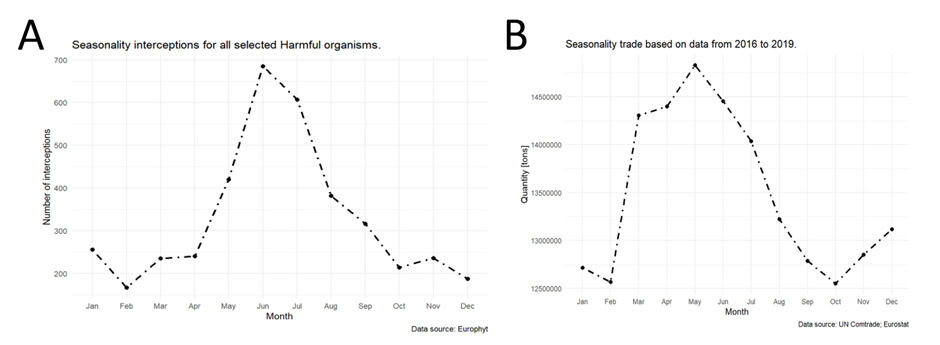
Figure 3. Historical seasonality of interceptions (A) and trade of goods associated with fruit flies (B).
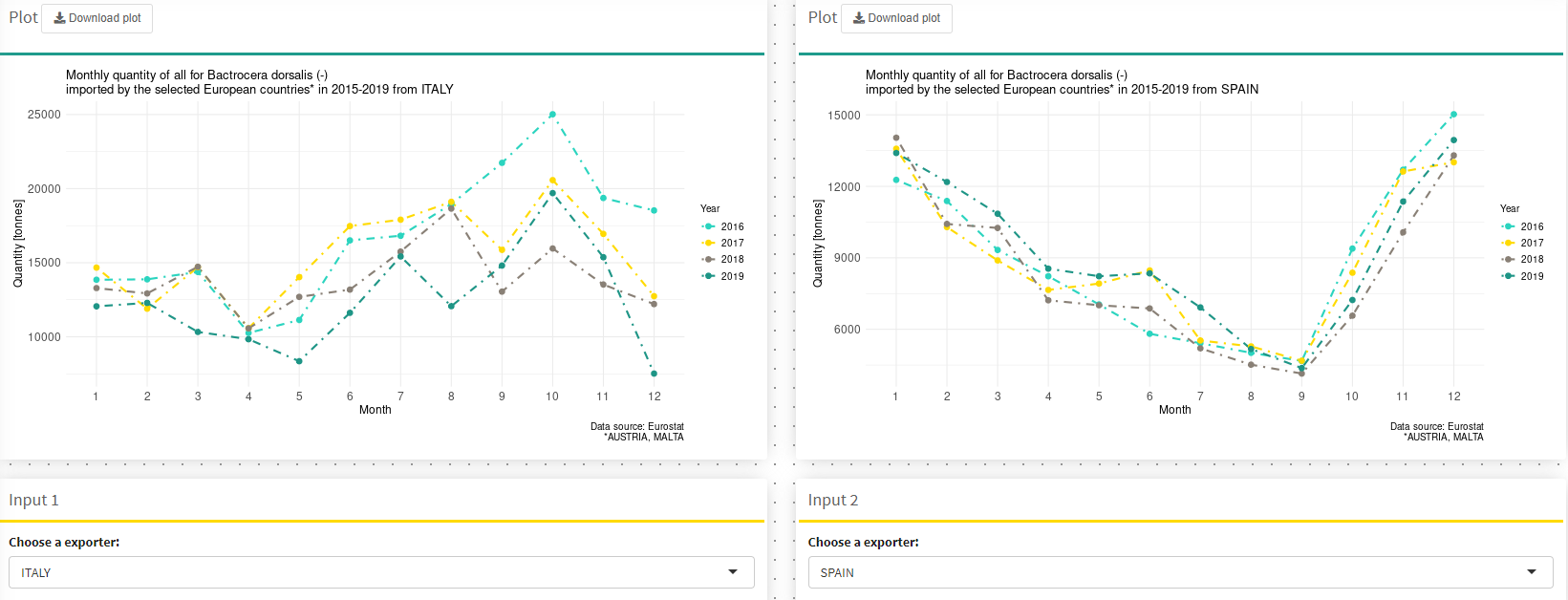
Figure 4. Monthly quantity of all the goods associated with Bactrocea dorsalis exported to Italy (left) and Germany (right).
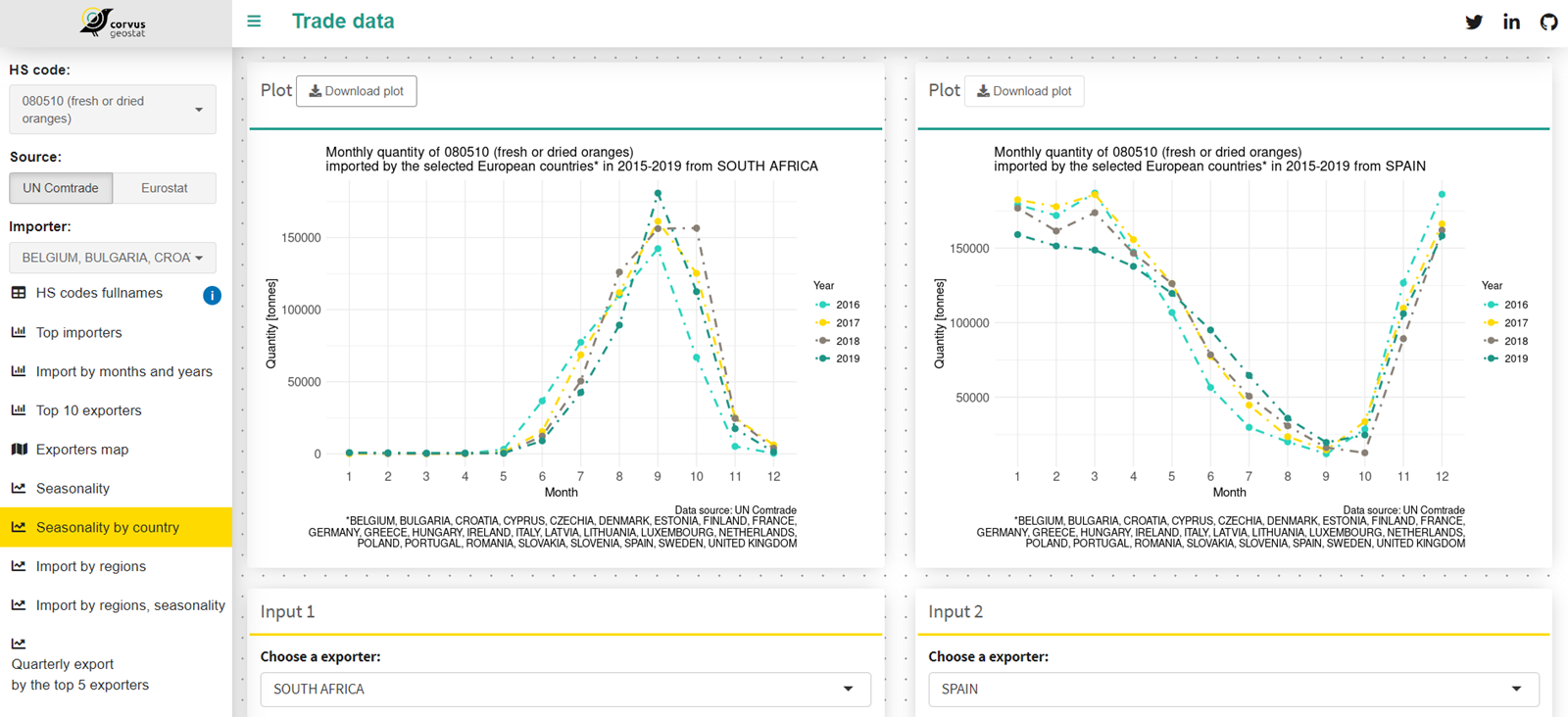
Figure 5. Seasonality of trade flows by individual countries and years for a selected commodity.
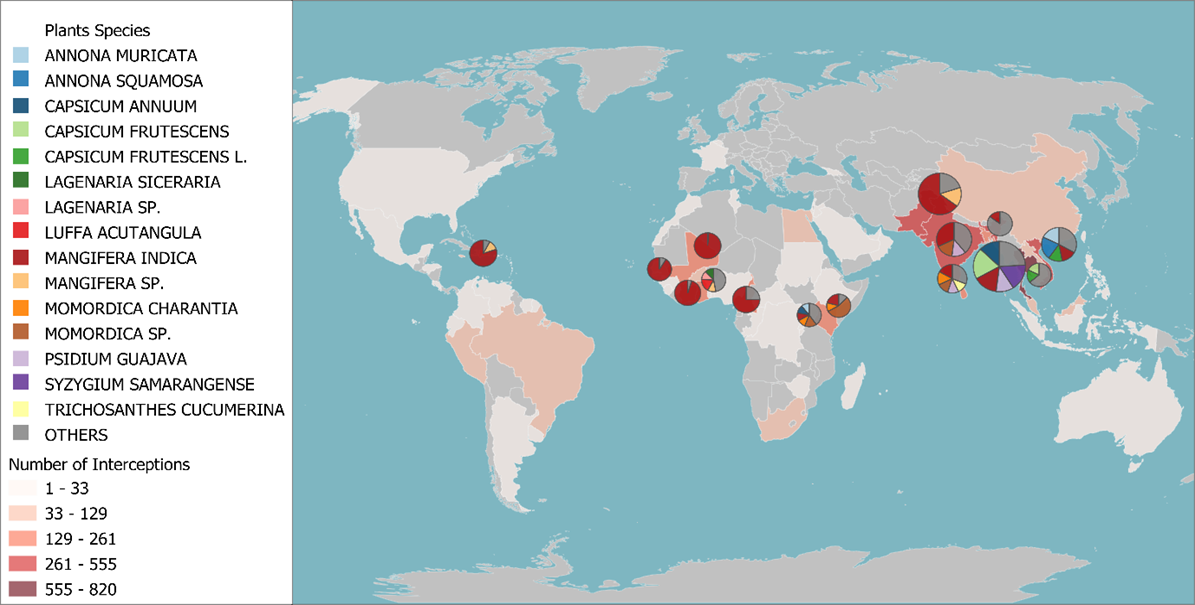
Figure 6. EUROPHYT/Traces data for 2005-2020 illustrating origin countries from which interceptions of organisms classified as Tephritidae and Bactrocera. Pie charts represent the type of commodity associated with interception records and the shades of polygons indicate the number of interceptions from that origin country.

Figure 7. Heatplot representing annual exports of all commodities associated with Bactrocera dorsalis to selected European countries (Austria and Malta).
Pricing
These analyses are provided free of charge.
If you are interested in us developing a CLIMEX model for another species for you, running climate change scenarios or developing different mapping products, please contact us here. For further information, please visit www.cervantesagritech.com.
Keywords
FF-IPM Developed, Tools, Trade, Contamination
Additional information
| Language | English |
|---|---|
| Person Responsible | Anna Szyniszewska and Darren Kriticos |
| Document(s) | https://platform.fruitflies-ipm.eu/wp-content/uploads/2024/02/Tool-2-Pathway-Risks.pdf |
Reviews
There are no reviews yet.